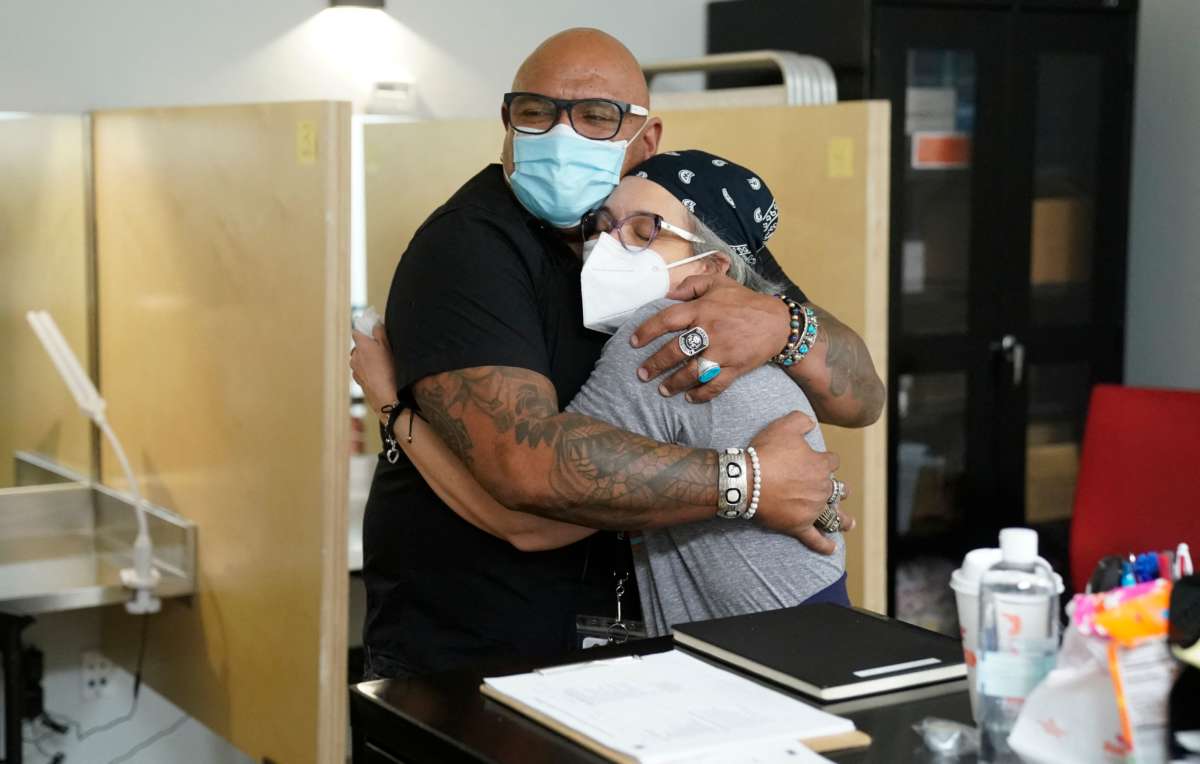Jess Tilley works on the front lines of the U.S.’s overdose crisis. She runs a mobile syringe exchange in Northampton, Massachusetts, delivering clean needles to intravenous drug users. It’s a job that routinely brings her into situations of life or death. Tilley has responded to many overdoses over the years, and while she has never failed to resuscitate someone, every such encounter is intensely stressful. The work takes a mental toll.
It also frustrates her. “There is a better way to do this,” she says. “We know what would lower the number of overdose deaths: We want supervised injection.”
Finally, the country has begun a conversation about harm reduction interventions, including supervised injection facilities (also known as overdose prevention sites) where people can use drugs in the presence of medical professionals. The debate has come thanks to decades of advocacy by activists — many of them drug users — and has been tragically forced on the nation by an incredible number of overdose deaths.
When, in a few months, the Centers for Disease Control and Prevention releases fatal overdose numbers for 2021, it is all but certain that for the first time, the national total will surpass 100,000 deaths. That compares to an annual average of less than 14,000 through the 1990s.
The U.S.’s overdose crisis now kills about double the number of people each year than AIDS did during the very worst years of that crisis.
Another round figure, much smaller than 100,000 but equally significant, comes from efforts to reduce drug deaths. That number is zero. Last November, New York City opened the country’s first sanctioned supervised injection facilities — one in Harlem and the second in Upper Manhattan — where people bring drugs like heroin and cocaine to use them under the watchful care of program staff. During their first two months of operation, there were 5,849 injections, staff reversed 123 potentially fatal overdoses, and the number of deaths was zero.
Supervised injection facilities are not a silver bullet for the overdose crisis. They won’t bring it to an end. But they will save a lot of lives, and possibly reverse a trend of increasing deaths that has continued almost without interruption for more than four decades now (save for just one year, 2018).
A debate about supervised injection is long overdue in the U.S. Canada established its first site in 2003 and many have operated in Europe for decades. Finally, it looks like a conversation that the U.S. is ready to have.
In addition to New York, no fewer than 10 other states are engaged in various levels of consideration. Colorado, Pennsylvania and Washington State once looked like they could have established programs several years ago. Those efforts have suffered legal setbacks or stalled amid tough local opposition. But discussions continue. California was within inches of allowing supervised injection until former Gov. Jerry Brown vetoed a bill just before leaving office in 2018. Now legislators are making a promising second attempt. In other states, such as Illinois, Massachusetts and Rhode Island, conversations about the idea are moving quickly, and in Connecticut, Maine and Oregon, movements advocating for sites are younger but gaining momentum.
The idea can feel counterintuitive, and hesitancy should be acknowledged and met with education. There is a small mountain of academic research that shows that supervised injection facilities reduce overdose deaths, improve health outcomes, facilitate pathways to treatment and do not encourage drug use.
Beyond the data, supervised consumption keeps people safe in less measurable ways. Using drugs in hiding leaves people more vulnerable to violence and abuse, including at the hands of police. At a supervised injection site, people can use drugs in a sterile environment and take time to carefully measure them out, test them for purity with equipment supplied by the facility, and inject or smoke them under the watchful care of staff, who are ready to respond in the event of an overdose.
Moral or ideological objections to supervised consumption fall apart when we acknowledge the implications for people’s actual lives. At a supervised injection site, users have better control over what they put into their bodies. They have autonomy, and are treated with respect.
The need for supervised injection facilities is urgent, and not only to reduce overdose deaths. Drug users are human beings, and they deserve to be treated as such.
3 Days Left: All gifts to Truthout now matched!
From now until the end of the year, all donations to Truthout will be matched dollar for dollar up to $38,000! Thanks to a generous supporter, your one-time gift today will be matched immediately. As well, your monthly donation will be matched for the whole first year, doubling your impact.
We have just 3 days left to raise $38,000 and receive the full match.
This matching gift comes at a critical time. As Trump attempts to silence dissenting voices and oppositional nonprofits, reader support is our best defense against the right-wing agenda.
Help Truthout confront Trump’s fascism in 2026, and have your donation matched now!
